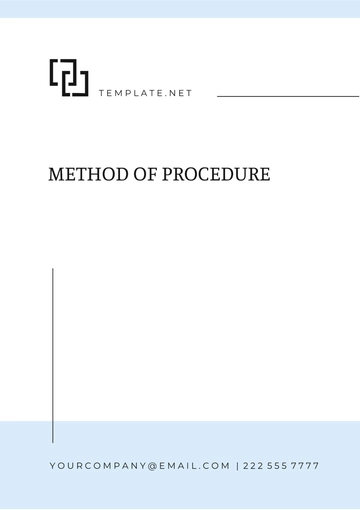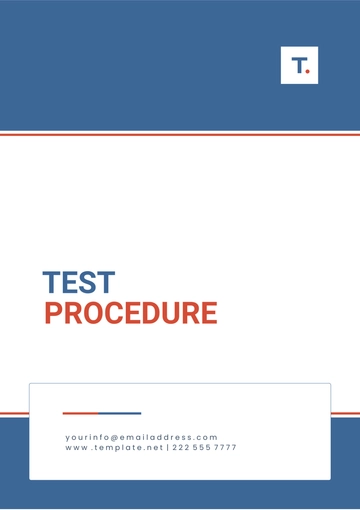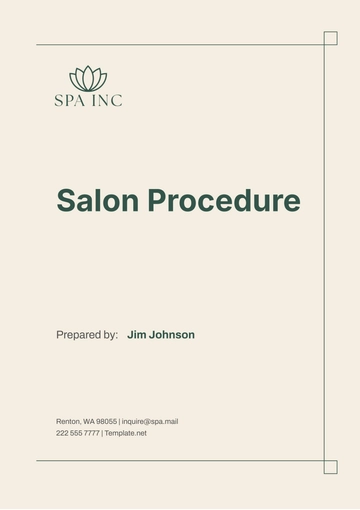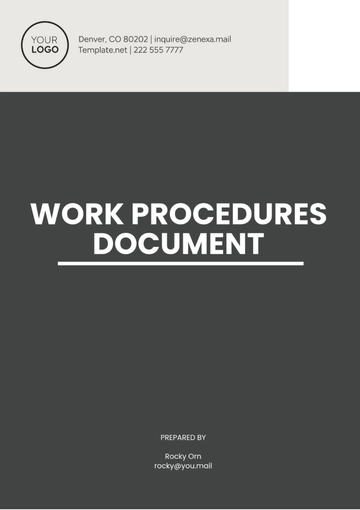Free Car Rental Complaint Resolution Procedure

I. Overview
At [Your Company Name], we are committed to delivering exceptional service to our customers. Ensuring a seamless and satisfactory experience is paramount, and when issues arise, it is crucial that they are addressed promptly and effectively. This procedure outlines the steps for resolving customer complaints, demonstrating our dedication to continuous improvement and customer satisfaction.
II. Introduction
A. Purpose of the Procedure
The purpose of this Car Rental Complaint Resolution Procedure is to provide a clear, structured, and consistent approach to handling customer complaints. This ensures that all complaints are resolved in a fair, timely, and professional manner, reinforcing our commitment to customer service excellence.
B. Scope of the Procedure
This procedure applies to all employees of [Your Company Name] involved in receiving, investigating, and resolving customer complaints. It covers complaints received through various channels, including in-person, phone, email, and our website. It also includes steps for documentation, follow-up, and continuous improvement to prevent future occurrences.
C. Definition of a Complaint
A complaint is any expression of dissatisfaction made by a customer regarding the services provided by [Your Company Name]. Complaints can range from issues with vehicle conditions and rental agreements to customer service interactions and billing discrepancies. This procedure aims to address all types of complaints to restore customer confidence and satisfaction.
III. Initial Complaint Handling
A. Receiving Complaints
Complaints can be received through multiple channels to ensure accessibility for all customers. These channels include in-person at our rental locations, via phone, through email, and on our website. Each channel is monitored by trained staff to ensure complaints are logged accurately and promptly.
B. Logging the Complaint
Upon receiving a complaint, the first step is to log it into our complaint management system. This log should include the following details:
Date and time of the complaint
Customer’s name and contact information
Description of the complaint
Rental agreement or transaction details
Assigned case manager (if applicable)
Maintaining a detailed log helps track the complaint's progress and ensures all necessary information is available for investigation.
C. Acknowledging Complaints
Acknowledging receipt of a complaint is a crucial step in the complaint resolution process. Customers should receive an acknowledgment within 24 hours of submitting their complaint. The acknowledgment should include:
Confirmation of receipt
An overview of the complaint resolution process
Expected timeframes for investigation and resolution
Contact details for further inquiries
This initial communication reassures the customer that their complaint is being taken seriously and sets expectations for the resolution process.
IV. Investigation Process
A. Assigning a Case Manager
Each complaint is assigned to a case manager who is responsible for overseeing the investigation and resolution process. The case manager is chosen based on their expertise and the nature of the complaint. Their responsibilities include:
Contacting the customer for additional information, if needed
Gathering and reviewing relevant documents and evidence
Coordinating with other departments as necessary
Gathering Information
To thoroughly investigate a complaint, the case manager collects all pertinent information. This may include:
Customer statements and correspondence
Rental agreement details
Vehicle inspection reports
Staff accounts and internal communications
This comprehensive approach ensures that all aspects of the complaint are examined.
B. Interviewing Involved Parties
If the complaint involves specific staff members or other parties, the case manager conducts interviews to gather their accounts. This helps to establish a complete understanding of the incident from all perspectives.
C. Analyzing the Complaint
The case manager analyzes the gathered information to identify the root cause of the complaint. This analysis involves:
Reviewing the sequence of events leading to the complaint
Assessing any procedural or service failures
Identifying any patterns or recurring issues
D. Assessing the Impact of the Issue
Understanding the impact of the issue on the customer and the business is essential. This assessment considers:
Customer inconvenience and dissatisfaction
Potential financial implications (e.g., refunds, compensations)
Reputational impact on [Your Company Name]
V. Resolution Process
A. Developing a Resolution Plan
Based on the analysis, the case manager develops a resolution plan tailored to the specific complaint. This plan outlines the steps to be taken to address the issue and may include:
Offering a refund or partial reimbursement
Providing a replacement vehicle or service
Issuing an apology or goodwill gesture
Implementing corrective actions to prevent recurrence
The resolution plan also includes a timeline for implementation, ensuring that actions are taken promptly.
B. Possible Resolution Actions
Resolution Action | Description |
|---|---|
Refund/Partial Reimbursement | Offering financial compensation for inconvenience or service failure. |
Replacement Vehicle/Service | Providing a substitute vehicle or service to address the issue. |
Apology/Goodwill Gesture | Issuing a formal apology and possibly a goodwill gesture (e.g., discount on future rental). |
Corrective Actions | Implementing measures to rectify procedural or service issues identified during the investigation. |
C. Timeframe for Implementing the Resolution
Timely resolution is crucial for maintaining customer satisfaction. The resolution plan should specify the timeframe for each action, with a goal to resolve the complaint within a specified period, typically 7-14 days from the initial complaint.
D. Communicating the Resolution
Once the resolution plan is developed, it is essential to communicate the proposed resolution to the customer. This communication should include:
A clear explanation of the findings from the investigation
Details of the proposed resolution actions
Timeframes for implementation
Contact information for further assistance
Providing a thorough explanation helps to rebuild trust with the customer and demonstrates our commitment to resolving their issue.
E. Implementing the Resolution
The case manager ensures that the resolution actions are carried out as planned. This may involve coordinating with various departments, such as finance for processing refunds or operations for arranging replacement vehicles.
F. Monitoring the Resolution’s Impact
After implementing the resolution, the case manager monitors its impact to ensure that the issue has been effectively addressed. This may include follow-up communication with the customer to confirm their satisfaction and any additional steps required.
VI. Follow-Up and Feedback
A. Customer Follow-Up
After implementing the resolution, it is vital to follow up with the customer to ensure their satisfaction with the outcome. This follow-up process demonstrates our commitment to excellent customer service and provides an opportunity to address any remaining concerns. Typically, follow-up communication occurs within a week of implementing the resolution.
The follow-up can be conducted through various channels, such as email, phone calls, or in-person meetings, depending on the customer's preference and the nature of the complaint. During the follow-up, the case manager should confirm that the resolution was satisfactory and inquire if the customer has any additional feedback or concerns.
Follow-Up Communication Table
Follow-Up Method | Timing | Purpose |
|---|---|---|
Within 7 days | Confirm resolution satisfaction and invite additional feedback | |
Phone Call | Within 7 days | Personal confirmation of satisfaction and discussion of any further issues |
In-Person Meeting | Within 7 days | Direct confirmation and immediate resolution of any additional concerns |
If the customer is not satisfied with the resolution, the case manager should take additional steps to address their concerns. This may involve further investigation or offering additional remedies to ensure the customer's issues are fully resolved.
B. Internal Feedback
Feedback from the complaint resolution process is invaluable for continuous improvement. The case manager should document the resolution outcome and share it with the management team during regular review meetings. This feedback loop ensures that any systemic issues identified during the complaint investigation are addressed and corrective measures are implemented.
The internal feedback process includes analyzing complaint trends, identifying common issues, and recommending changes to policies, procedures, or training programs. This proactive approach helps to prevent future complaints and enhances overall service quality.
VII. Documentation and Record-Keeping
A. Maintaining Complaint Records
Accurate and detailed documentation of all complaints is essential for effective complaint management and continuous improvement. Each complaint should be recorded in a centralized complaint management system, including all relevant details such as the nature of the complaint, investigation findings, resolution actions, and follow-up outcomes.
Complaint records should be maintained for a specified period, typically five years, to allow for trend analysis and compliance with legal and regulatory requirements. Proper record-keeping ensures that [Your Company Name] can review past complaints, track resolution effectiveness, and identify areas for improvement.
B. Confidentiality and Data Protection
Protecting customer privacy and ensuring data security are critical aspects of the complaint resolution process. All complaint records must be handled in accordance with data protection regulations, such as GDPR or other relevant legislation. Access to complaint records should be restricted to authorized personnel only, and measures should be in place to safeguard against unauthorized access or data breaches.
Employees handling complaints must be trained on data protection policies and the importance of maintaining confidentiality. By adhering to these standards, [Your Company Name] ensures that customer information is secure and that the company remains compliant with legal obligations.
VIII. Continuous Improvement
A. Analyzing Trends
Analyzing complaint data is crucial for identifying patterns and recurring issues that may indicate systemic problems within the organization. Regular analysis helps to pinpoint areas where service improvements are needed and allows [Your Company Name] to implement proactive measures to enhance customer satisfaction.
The case manager should compile regular reports summarizing complaint trends, including the number of complaints received, types of complaints, resolution times, and customer satisfaction levels. These reports should be reviewed by the management team to inform strategic decisions and prioritize areas for improvement.
Complaint Trends Analysis Table
Analysis Metric | Current Period (Q1) | Previous Period (Q4) | Change |
|---|---|---|---|
Number of Complaints | 50 | 45 | +5 |
Types of Complaints | Cleanliness, Mechanical Issues, Customer Service | Cleanliness, Mechanical Issues | N/A |
Average Resolution Time | 7 days | 9 days | -2 days |
Customer Satisfaction Rate | 85% | 80% | +5% |
B. Implementing Systemic Changes
Based on the analysis, [Your Company Name] should implement systemic changes to address identified issues. This may involve revising policies, updating procedures, enhancing training programs, or investing in new technologies to improve service delivery. By addressing the root causes of complaints, the company can reduce the likelihood of similar issues occurring in the future.
C. Training and Development
Regular training and development programs for staff are essential for maintaining high standards of service quality. Training should focus on customer service skills, complaint handling procedures, and any specific areas identified through the complaint analysis process.
Employees should be encouraged to provide feedback on the training programs and suggest areas for improvement. By fostering a culture of continuous learning and development, [Your Company Name] ensures that its staff are well-equipped to handle customer complaints effectively and deliver exceptional service.
IX. Conclusion
The Car Rental Complaint Resolution Procedure at [Your Company Name] is designed to ensure that customer complaints are handled promptly, professionally, and effectively. By following the outlined steps, we can maintain high levels of customer satisfaction and continuously improve our services.
The procedure emphasizes the importance of thorough investigation, timely resolution, effective communication, and continuous improvement. By adhering to these principles, [Your Company Name] demonstrates its commitment to providing exceptional service and addressing customer concerns in a fair and transparent manner.
A. Commitment to Continuous Improvement
[Your Company Name] is dedicated to learning from each complaint and using this knowledge to enhance our overall service delivery. By regularly reviewing and updating our complaint resolution procedures, we can ensure that we remain responsive to customer needs and continue to exceed their expectations.
Through this comprehensive approach to complaint resolution, [Your Company Name] aims to build lasting relationships with our customers, foster trust and loyalty, and uphold our reputation for excellence in the car rental industry.
- 100% Customizable, free editor
- Access 1 Million+ Templates, photo’s & graphics
- Download or share as a template
- Click and replace photos, graphics, text, backgrounds
- Resize, crop, AI write & more
- Access advanced editor
Resolve complaints effectively with Template.net's customizable and editable Car Rental Complaint Resolution Procedure Template. Utilize the AI Editor Tool to create structured resolution procedures. Enhance customer service and issue management with this comprehensive and user-friendly template, ensuring clear complaint resolution processes.





























